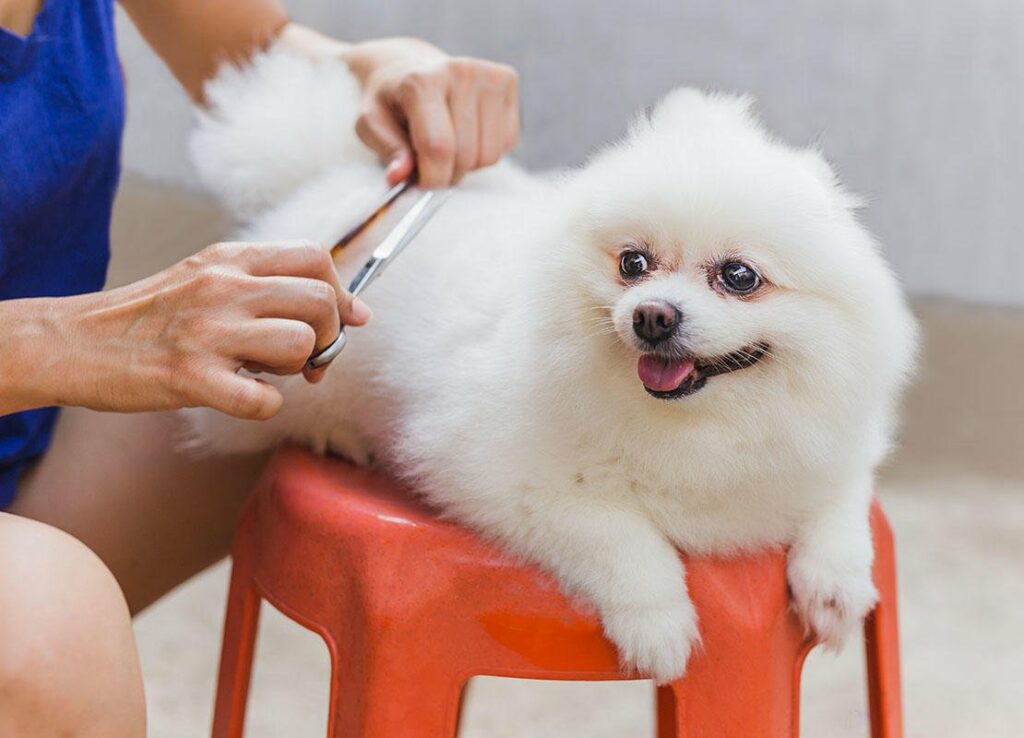How to groom a pet

Grooming a pet is an essential part of responsible pet ownership. It not only keeps your furry friend looking good but also ensures their health and well-being. Whether you have a dog, cat, rabbit, or any other pet, grooming involves a variety of tasks including brushing, bathing, trimming nails, cleaning ears, and more. In this comprehensive guide, we will cover all aspects of pet grooming, providing you with the knowledge and techniques to keep your pet looking and feeling their best.
Why Grooming is Important
1. Health Benefits
Regular grooming helps in maintaining your pet’s overall health. Brushing removes dirt, dandruff, and dead hair, preventing matting and tangles that can lead to skin issues. Bathing keeps the skin and coat clean, reducing the risk of infections. Regular inspections during grooming sessions help identify potential health issues such as lumps, parasites, or skin problems early.
2. Bonding
Grooming your pet is an excellent way to bond. It provides an opportunity for positive interaction and can strengthen the relationship between you and your pet. Gentle grooming sessions can be relaxing and enjoyable for both of you.
3. Appearance
A well-groomed pet looks clean, tidy, and more attractive. Regular grooming keeps your pet’s coat shiny and healthy, and trims help maintain a neat appearance.
4. Comfort
Grooming enhances your pet’s comfort. Brushing removes loose hair and prevents matting, which can be uncomfortable and painful. Trimming nails prevents overgrowth, which can cause difficulty walking and potential injuries.
Tools and Supplies for Grooming
Having the right tools and supplies is crucial for effective grooming. Here’s a list of essential grooming tools for various pets:
For Dogs and Cats
- Brushes and Combs: Choose appropriate brushes for your pet’s coat type. Slicker brushes, bristle brushes, and undercoat rakes are common options.
- Nail Clippers: Guillotine or scissor-style clippers are ideal for trimming nails.
- Shampoo and Conditioner: Use pet-specific shampoos and conditioners suitable for your pet’s skin and coat type.
- Ear Cleaner: An ear cleaning solution and cotton balls or pads are needed to clean ears.
- Toothbrush and Toothpaste: Use pet-specific toothpaste and a toothbrush for dental care.
- Grooming Scissors and Clippers: For trimming fur, especially in breeds that require regular haircuts.
For Small Pets (Rabbits, Guinea Pigs, etc.)
- Soft Brushes and Combs: Small, gentle brushes for delicate fur.
- Nail Clippers: Small clippers suitable for tiny nails.
- Grooming Wipes: Useful for spot cleaning.
- Ear Cleaner: For cleaning ears if needed.
Preparing for Grooming
Before you start grooming, it’s important to prepare both your pet and yourself:
1. Create a Calm Environment
Choose a quiet, comfortable space for grooming. Ensure the area is free from distractions and noise that could stress your pet.
2. Gather All Supplies
Have all your grooming tools and supplies within reach to avoid interruptions during the grooming session.
3. Calm Your Pet
Gently talk to your pet and use soothing gestures to calm them. If your pet is anxious, consider using treats or a favorite toy to distract and reward them.
4. Safety First
Ensure your pet is securely positioned to prevent any sudden movements that could cause injury. For smaller pets, consider using a grooming table or non-slip mat.
Step-by-Step Grooming Guide
Brushing
Regular brushing is crucial for maintaining a healthy coat and preventing matting.
For Dogs and Cats
- Choose the Right Brush: Select a brush suitable for your pet’s coat type. For short-haired breeds, a bristle brush or rubber curry brush works well. For long-haired breeds, a slicker brush or undercoat rake is ideal.
- Start Gently: Begin brushing from the head and move towards the tail. Be gentle, especially if there are tangles or mats.
- Check for Mats: If you encounter mats, use a dematting tool or your fingers to gently work them out. Avoid pulling, as it can be painful.
- Brush the Entire Coat: Ensure you brush all areas, including the chest, belly, and legs.
For Small Pets
- Use a Soft Brush: Use a gentle brush designed for small animals. Start brushing from the head and move towards the tail.
- Be Gentle: Small pets have delicate skin, so be extra gentle to avoid hurting them.
Bathing
Bathing keeps your pet’s skin and coat clean and healthy. However, the frequency of baths depends on the pet’s breed and lifestyle.
For Dogs
- Choose the Right Shampoo: Use a dog-specific shampoo suitable for your dog’s skin type.
- Prepare the Bath: Fill the tub or sink with lukewarm water. Ensure the water level is appropriate for your dog’s size.
- Wet the Coat: Use a cup or sprayer to wet your dog’s coat thoroughly.
- Apply Shampoo: Apply a small amount of shampoo and lather it into the coat, starting from the head and moving towards the tail. Avoid getting shampoo in the eyes and ears.
- Rinse Thoroughly: Rinse the coat thoroughly to remove all shampoo. Ensure no residue is left, as it can cause skin irritation.
- Dry the Coat: Use a towel to pat your dog dry. For long-haired breeds, you may need a hairdryer set to a low heat setting.
For Cats
- Use Cat-Specific Shampoo: Choose a mild, cat-specific shampoo.
- Prepare the Bath: Fill the sink or tub with a small amount of lukewarm water.
- Wet the Coat: Gently wet your cat’s coat using a cup or sprayer.
- Apply Shampoo: Apply a small amount of shampoo and lather it into the coat, avoiding the face and ears.
- Rinse Thoroughly: Rinse your cat thoroughly to remove all shampoo.
- Dry the Coat: Use a towel to pat your cat dry. Avoid using a hairdryer, as the noise can scare them.
For Small Pets
- Spot Clean: Small pets usually do not require full baths. Use grooming wipes or a damp cloth to clean dirty areas.
- Dry Thoroughly: Ensure your pet is completely dry before returning them to their habitat to prevent chills.
Nail Trimming
Regular nail trimming prevents overgrowth, which can cause pain and difficulty walking.
For Dogs and Cats
- Choose the Right Clippers: Use guillotine or scissor-style clippers suitable for your pet’s size.
- Inspect the Nails: Identify the quick (the pink part inside the nail). Avoid cutting into the quick, as it can cause bleeding and pain.
- Trim the Nails: Trim a small amount of the nail at a time. Hold the clippers at a slight angle and cut just below the quick.
- Smooth the Edges: Use a nail file to smooth any rough edges.
For Small Pets
- Use Small Clippers: Use small clippers designed for small animals.
- Trim Carefully: Trim a small amount of the nail at a time, avoiding the quick.
- Be Gentle: Small pets have delicate nails, so be extra gentle.
Ear Cleaning
Regular ear cleaning prevents infections and ensures your pet’s ears are healthy.
For Dogs and Cats
- Choose an Ear Cleaner: Use a pet-specific ear cleaning solution.
- Apply the Solution: Apply a few drops of the solution into your pet’s ear canal.
- Massage the Base: Gently massage the base of the ear to distribute the solution.
- Wipe Clean: Use a cotton ball or pad to wipe away any dirt and debris. Avoid using cotton swabs inside the ear canal.
For Small Pets
- Use a Gentle Cleaner: Use a mild ear cleaning solution.
- Clean Carefully: Apply a small amount of the solution and gently wipe the ears with a cotton ball or pad.
Dental Care
Regular dental care prevents plaque buildup and maintains your pet’s oral health.
For Dogs and Cats
- Choose Pet-Specific Toothpaste: Use toothpaste formulated for pets. Do not use human toothpaste.
- Use a Toothbrush: Use a pet-specific toothbrush or a finger brush.
- Brush the Teeth: Lift your pet’s lips and gently brush their teeth in circular motions.
- Start Slowly: If your pet is not used to brushing, start slowly and gradually increase the time and coverage.
For Small Pets
- Provide Chew Toys: Offer chew toys designed to promote dental health.
- Use Dental Treats: Provide dental treats that help clean teeth.
Hair Trimming
Regular trimming keeps your pet’s coat neat and prevents matting.
For Dogs
- Choose the Right Tools: Use grooming scissors and clippers suitable for your dog’s coat type.
- Trim Carefully: Trim the fur around the face, paws, and sanitary areas.
- Use Clippers for Body: Use clippers with appropriate guards to trim the body fur. Be gentle and avoid cutting too close to the skin.
For Cats
- Trim Long Fur: Use grooming scissors to trim long fur around the face, paws, and sanitary areas.
- Be Gentle: Cats can be sensitive, so be gentle and patient.
For Small Pets
- Trim Long Fur: Use small scissors to trim long fur, especially around the face and sanitary areas.
- Be Extra Gentle: Small pets are delicate, so be very gentle during trimming.
Grooming Schedule
Establishing a regular grooming schedule is essential for maintaining your pet’s health and appearance. Here’s a general guideline for various pets:
Dogs
- Brushing: Daily or several times a week, depending on the coat type.
- Bathing: Every 4-6 weeks or as needed.
- Nail Trimming: Every 3-4 weeks.
- Ear Cleaning: Every 2-4 weeks.
- Dental Care: Daily brushing and regular dental treats.
Cats
- Brushing: Daily for long-haired breeds, weekly for short-haired breeds.
- Bathing: Rarely needed, only if the cat is dirty or has a skin condition.
- Nail Trimming: Every 2-3 weeks.
- Ear Cleaning: Every 2-4 weeks.
- Dental Care: Daily brushing and regular dental treats.
Small Pets (Rabbits, Guinea Pigs, etc.)
- Brushing: Weekly.
- Bathing: Rarely needed, spot cleaning is usually sufficient.
- Nail Trimming: Every 4-6 weeks.
- Ear Cleaning: As needed, usually monthly.
- Dental Care: Provide chew toys and dental treats.
Special Considerations
Long-Haired Breeds
Long-haired pets require more frequent grooming to prevent matting and tangles. Regular brushing and occasional trimming are essential.
Short-Haired Breeds
Short-haired pets still need regular grooming to remove loose hair and maintain skin health. Brushing and bathing as needed are sufficient.
Senior Pets
Senior pets may have specific grooming needs due to age-related issues such as arthritis or skin conditions. Be gentle and patient, and consider consulting your veterinarian for specialized care.
Pets with Skin Conditions
If your pet has a skin condition, consult your veterinarian for appropriate grooming products and techniques. Medicated shampoos or special treatments may be required.
Professional Grooming
While regular at-home grooming is essential, professional grooming can provide additional benefits. Professional groomers are trained to handle various breeds and coat types, and they can provide services such as advanced haircuts, anal gland expression, and more. Consider scheduling regular professional grooming sessions, especially for breeds that require specific grooming techniques.
Conclusion
Grooming your pet is a vital aspect of responsible pet ownership. It not only keeps your pet looking good but also ensures their health and comfort. By understanding the importance of grooming, gathering the right tools, and following a regular grooming schedule, you can keep your pet happy, healthy, and looking their best. Remember to be patient, gentle, and positive during grooming sessions to make the experience enjoyable for both you and your pet.







